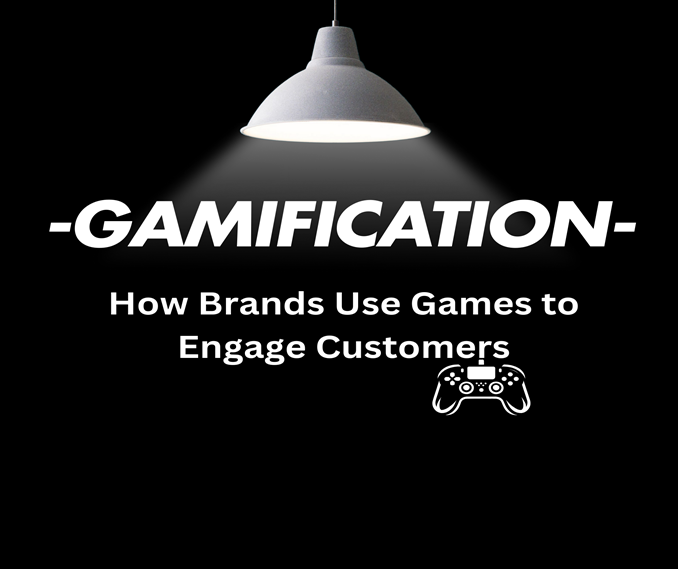

Tech Trends to Watch: What's Next for the IT Industry?
"Key Innovations Shaping the Future of Technology and Business"
Categories
Digital Marketing
2
Cloud Services
0
No posts available.
Commercial
0
No posts available.
Cyber Security
1
SMM
0
No posts available.
Data Mining
0
No posts available.
Mobile Application
0
No posts available.
Operating System
0
No posts available.
Latest Posts

Freedom GPT: A Comprehensive Overview
Jan 18, 2025
The Future of AR and VR in Business Applications
Nov 26, 2024
Gamification in Marketing: How Brands Use Games to Engage Customers
Introduction
Gamification has evolved from a simple novelty to a core component of successful digital marketing strategies. In today’s fast-paced digital environment, customers are increasingly seeking engaging, interactive experiences rather than passive marketing messages. For brands, this means incorporating game-like elements into campaigns to keep users involved, improve brand loyalty, and drive conversion. In this blog, we explore the psychology behind gamification, successful brand examples, and key tips for incorporating gamification into marketing strategies.
1. Why Gamification Works in Marketing
The science of gamification rests on our natural psychological inclinations toward achievement, competition, and rewards. By adding game-like elements such as points, badges, or leaderboards, brands can tap into these motivational triggers to boost user engagement. When users feel they’re making progress or working toward a reward, they become more invested in the experience. This investment translates to higher brand loyalty and increased sales.
- Engagement and Retention: Gamified content keeps users engaged by offering instant feedback and gratification, making them more likely to return.
- Social Sharing: Games often involve leaderboards or sharing features, creating an organic boost in social engagement as players share their progress.
- Brand Loyalty: When users earn rewards, they associate positive feelings with the brand, making them more likely to choose it over competitors.

2. Examples of Brands Successfully Using Gamification
- Nike: The Nike Run Club app uses gamification by tracking users' running activities, awarding badges, and allowing users to set goals. This motivates users to stay active while staying loyal to Nike’s platform.
- Starbucks: Starbucks Rewards app allows users to collect stars for every purchase, which they can redeem for free items. This program keeps customers coming back, as they feel they’re working toward tangible rewards.
- Duolingo: The popular language-learning app utilizes gamified elements like streaks, leaderboards, and rewards to make language learning addictive, with users logging in daily to maintain progress.

3. Elements of Gamification in Marketing
- Points and Badges: Points encourage users to interact with the brand by rewarding actions like completing a profile, making a purchase, or sharing on social media. Badges add a social aspect, letting users display their achievements.
- Leaderboards: Adding a competitive edge, leaderboards encourage users to compete with friends, making interactions more engaging and shareable. They’re especially popular in fitness apps, social media challenges, and online communities.
- Progress Bars and Levels: Progress bars and levels give users a sense of achievement and make it easy to visualize progress. For example, LinkedIn's profile completion progress bar motivates users to provide more information.
- Challenges and Quests: Brands can create themed challenges and offer rewards for user participation, which is great for building excitement and boosting user-generated content.

4. How to Implement Gamification in Marketing
- Define Clear Objectives: Before implementing gamification, identify the objectives—whether it’s increasing user engagement, encouraging sign-ups, or improving brand loyalty.
- Know Your Audience: Researching your target audience can reveal which gamification elements will resonate most.
- Incorporate Rewards Strategically: Rewards should feel achievable yet valuable. Smaller rewards encourage repeat interaction, while bigger rewards motivate long-term engagement.
- Optimize for Mobile: Design simple, intuitive games that are easy to play and navigate on smaller screens.
- Measure and Adjust: Track metrics like engagement rates, time spent, and conversion, and optimize based on real data.
Conclusion
Gamification is transforming how brands engage with customers, creating enjoyable experiences that foster loyalty and boost conversions. As more brands realize the power of gamification, it’s clear that incorporating game elements is no longer optional; it’s a necessity for a successful digital strategy. By understanding what drives your audience, carefully crafting rewards, and constantly refining the experience, your brand can harness the potential of gamification to captivate and retain cust



Comments
https://leelmaxinfotech.com/gamification-in-marketing-how-brands-use-games-to-engage-customers/#categories
ReplyGood
ReplyReally quite a lot of great knowledge! meilleur casino en ligne Superb tips, Regards. meilleur casino en ligne Lovely content. Regards. casino en ligne Nicely put, Cheers. casino en ligne fiable Superb tips, Many thanks. meilleur casino en ligne Information effectively used.! casino en ligne Thank you! An abundance of forum posts. meilleur casino en ligne Thanks a lot! Valuable information. casino en ligne francais Cheers. Loads of stuff. casino en ligne You've made your stand pretty well!. casino en ligne
ReplySir i need more knowledge about this topic
Reply